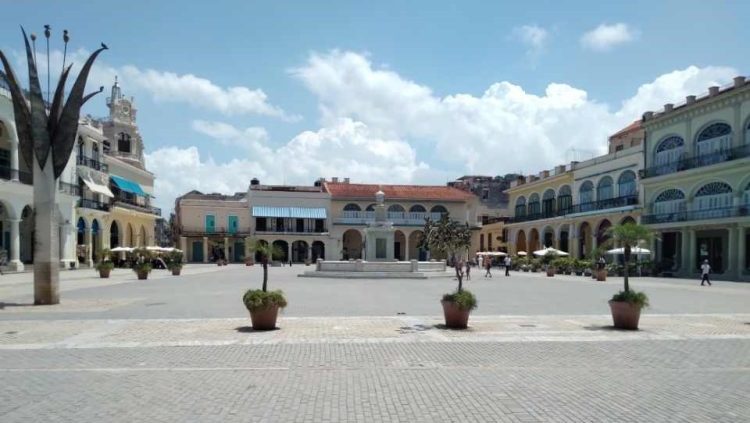HAVANA, Cuba – A few days ago, while walking through one of the restored areas of the Historic Center of Old Havana, I noticed that in places where there used to be a steady flow of foreigners, they are now few and far between.
In the main tourist spots, Plaza Vieja, Plaza de San Francisco, Plaza de Armas, and Plaza de la Catedral, surrounded by museums, historical sites, and other interesting attractions, there were only a few Cubans.
At a food and beverage outlet located at the corner of Teniente Rey and Oficios streets, there wasn’t a single customer at noon.
The cruise terminal, located in the old customs building at the port of Havana, is closed. Due to the restrictive measures imposed by the United States government, cruise ship travelers who used to be seen wandering around Old Havana no longer come.
The number of air-conditioned tour buses with tinted windows serves as a measure of the presence of foreigners in the area. They are usually parked all along Avenida del Puerto, but during my walk, I didn’t see a single one.
On Obispo Street, which has numerous businesses attractive to the many visitors who usually walk along this street, to my surprise, I also didn’t see any foreigners.
The hosts at the many restaurants on Obispo Street were shouting their offers, menu board in hand, trying to attract potential customers, but with little success.
What are not lacking are the homeless people wandering around Old Havana, begging; the musicians who, after playing and singing, “pass the hat” (ask for money for their performances); the conga groups of stilt-walking performers and their accompanying musicians; and the many trinket vendors.
The vendors, both private and state-run, offer their goods in “two currencies,” meaning in foreign currency or in its equivalent in the national currency.
Prices in Old Havana are higher than in the rest of the city, which affects the residents of the municipality.
Everywhere, you can see signs that say: “We buy USD or Euros” (understood to be at the unofficial exchange rate).
In Old Havana, there are more than 20 hotels, in addition to the residents who rent out rooms in their homes. But even though there are fewer and fewer tourists, the government continues to build hotels from Paseo del Prado all the way to the ocean.
Among the new buildings are the Hotel Corona, which used to be the Corona cigar factory; the huge block that will contain the Pasaje Payret, whose construction is currently halted; the gigantic Hotel Metropolitan, which will be managed by the Kempinski consortium; and the former La Metropolitana office building, where Fidel Castro had his law office when he graduated law school.
One of the major problems generated by the new hotels is the water shortage, an issue that has persisted since the founding of the city in the 16th century and is very difficult to resolve at this time, worsening the living conditions of the residents in this area.
Some airlines have increased the number of flights to Cuba. What has not increased is the number of tourists. That is why, at the recently concluded FIT Cuba Tourism Fair, the minister of tourism almost implored for tourists and investments to come.
If you hardly see any foreign tourists in Old Havana anymore, it’s because most of the visitors arriving in Cuba no longer come to Havana. Instead, they head to the tourist areas of Varadero, Cayo Largo, and the keys north of Camagüey and Ciego de Ávila. There, they will find fantasy destinations, far removed from our reality, and when they return to their countries, they will speak wonders about Cuba.
Sigue nuestro canal de WhatsApp. Recibe la información de CubaNet en tu celular a través de Telegram.
ARTÍCULO DE OPINIÓN Las opiniones expresadas en este artículo son de exclusiva responsabilidad de quien las emite y no necesariamente representan la opinión de CubaNet.
